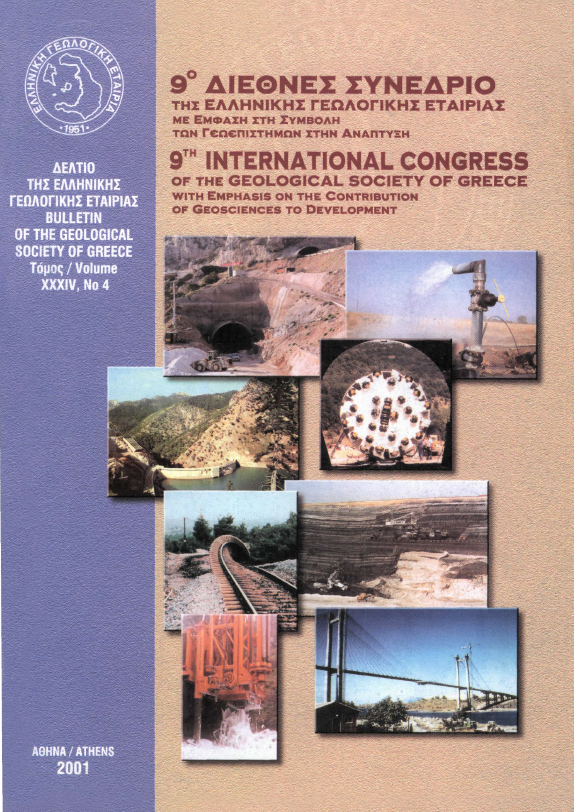Results for the shallow structure of the broader region of Chania by HVSR measurements of ambient noise and their validation using simulation of ambient noise and independent geological information.

Abstract
The city of Chania is located at the Western-North part of the island of Crete. It is mostly built over Neogene sediments of unknown thickness. In the southern part of the city the Chania basin is developed, filled mainly by Quaternary deposits overlying
the deep Neogene sediments. In this complex geological setting, we conducted over 200 single station measurements of ambient noise, aiming to estimate the predominant frequency of the subsurface formations. The obtained results for the HVSR data show a different behavior between sites located on Neogene and Quaternary
deposits. In general, Neogene sediments show a single peak at low frequencies (below 1Hz, typically in the range 0.4-0.6Hz), indicating a very thick layer overlying the bedrock (Trypalion and Plattenkalk limestones). On the other hand, measurements at Quaternary deposits show two peaks, with the first one similar to the Neogene formations, while the second one is identified at higher frequencies, typically
~0.8-4.0 Hz. Simulation of ambient noise 1-D models show a good correlation between the experimental and theoretical HVSR curves, especially when the initial model consists of two layers (typically Neogene sediments overlying high-velocity bedrock formations) with a clear identification of the lower frequency HVSR peak, while for three layered models (typically Quaternary sediments and underlying softer
Neogene and Neogene/bedrock high-velocity formations) results are more complicated, although both HVSR frequencies can be partly reconstructed.
Article Details
- How to Cite
-
Papadopoulos, I., Papazachos, C., Savvaidis, A., Theodoulidis, N., Vallianatos, F., & Tsourlos, P. (2013). Results for the shallow structure of the broader region of Chania by HVSR measurements of ambient noise and their validation using simulation of ambient noise and independent geological information. Bulletin of the Geological Society of Greece, 47(3), 1201–1210. https://doi.org/10.12681/bgsg.10976
- Section
- Articles

This work is licensed under a Creative Commons Attribution-NonCommercial 4.0 International License.
Authors who publish with this journal agree to the following terms:
Authors retain copyright and grant the journal right of first publication with the work simultaneously licensed under a Creative Commons Attribution Non-Commercial License that allows others to share the work with an acknowledgement of the work's authorship and initial publication in this journal.
Authors are able to enter into separate, additional contractual arrangements for the non-exclusive distribution of the journal's published version of the work (e.g. post it to an institutional repository or publish it in a book), with an acknowledgement of its initial publication in this journal. Authors are permitted and encouraged to post their work online (preferably in institutional repositories or on their website) prior to and during the submission process, as it can lead to productive exchanges, as well as earlier and greater citation of published work.








